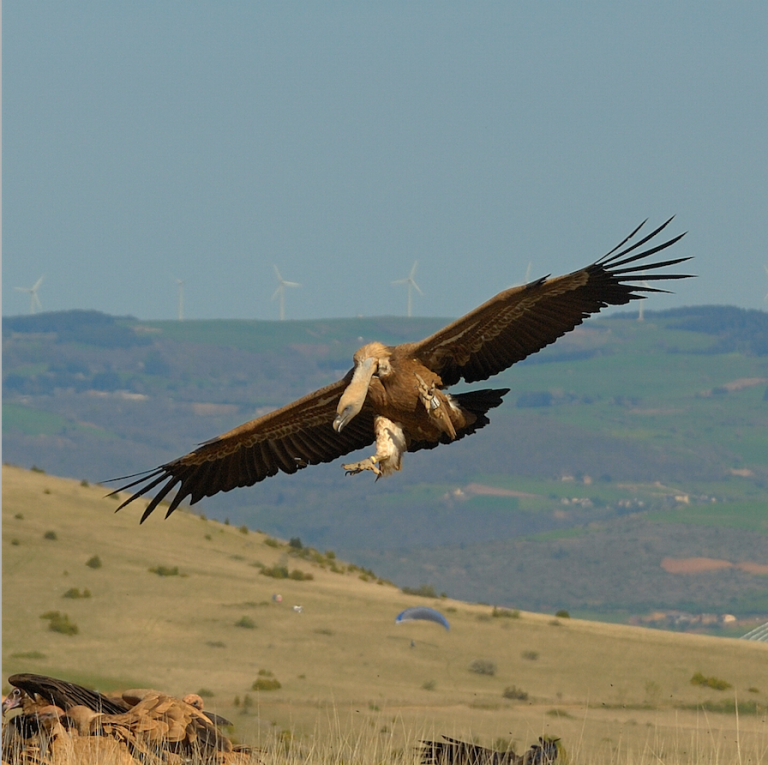A group of vultures feeding on a gnu carcass at dusk in the african Biology Diagrams This is an African Savanna Food Web.See if you can identify all the parts of the food web that make this a functioning, healthy ecosystem. Look for: The Producers - the trees, shrubs and grass.. The Primary Consumers - the zebras and elephants.. The Secondary Consumers - the cheetah, hyena.. The Scavengers - the termites, vultures and hyena.. The Decomposers or Detritivores - mushrooms 4. Lappet-Faced Vulture (Torgos tracheliotos) One of the largest vultures in Africa, this scavenger plays an essential role in cleaning up the grasslands by feeding on carcasses of dead animals. Reptiles and Insects of the Grasslands. Grasslands also support a variety of reptiles and insects that contribute to the food chain. 1. competition because they don't receive the huge influx of food when the migratory herds arrive. 3. If these animals are now permanently removed from the food web, how do you think the other animals in the Serengeti might be affected years down the road? Down the road more animals may go extinct/face food shortages. Carnivores will

Vultures in Open Grasslands: Masters of the Plains. Vultures, those majestic scavengers, soar high above the open grasslands, their keen eyes scanning the vast expanse for their next meal. Ecological Importance: Key Players in the Food Chain. Vultures occupy a crucial mid-level trophic level, connecting different parts of the food chain

Grassland Animals: Wildlife of the World's Vast Plains Biology Diagrams
In a grassland food chain, the grass is the producer. It produces food using the sun's energy. The primary consumers follow the producers. Insects like grasshoppers are primary grasslands consumers as they depend on the green plant for their food (herbivores). Occasionally, primary consumers are omnivores as well, such as aardvarks. Consumers in Grassland Food Webs. While grassland producers form the foundation of these ecosystems, the intricate web of consumers plays a vital role in shaping the dynamics and maintaining the balance within grassland biomes.These consumers, ranging from herbivores to predators, are intricately woven into the fabric of the food web, each fulfilling a unique ecological niche and contributing 3. Have students arrows on food web poster connecting producers to consumers. 4. Compare student's conclusions on their food web posters with the master food web poster (the one with the arrows). 5. Discuss how a change in the food web (an increase/decrease in population) could affect other life forms in the web. Contact Information

This is an American Prairie Food Web.See if you can identify all the parts of the food web that make this a functioning, healthy ecosystem. Look for: The Producers - the grass.. The Primary Consumers - the prairie dogs, grasshoppers, jackrabbits, and pronghorn antelope.. The Secondary Consumers - the owls, rattlesnakes and coyotes.. The Scavengers - the coyotes and insects.
